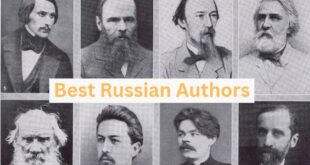Emily Dickinson Famous Poems
Here are some more of Emily Dickinson’s famous poems:
- “Tell all the Truth but tell it slant” (c. 1859):
- This poem encourages the indirect approach to truth-telling, suggesting that a gradual revelation of truth can be more impactful and better understood.
- “I felt a Funeral, in my Brain” (c. 1861):
- In this poem, Dickinson explores the metaphorical “funeral” of the speaker’s sanity, using vivid imagery and rhythmic language to convey a sense of psychological breakdown.
- “A Narrow Fellow in the Grass” (c. 1865):
- This nature poem vividly describes the presence of a snake in the grass, capturing the tension and fear associated with encounters with the natural world.
- “Success is counted sweetest” (c. 1859):
- Dickinson reflects on the concept of success, suggesting that those who have not experienced it fully appreciate its sweetness.
- “This is my letter to the World” (c. 1862):
- The poem expresses Dickinson’s relationship with the world and her role as a poet, presenting her written words as a letter to the broader audience.
- “A Route of Evanescence” (c. 1861):
- This short but evocative poem explores the transient nature of life, using the image of a hummingbird’s flight as a metaphor for fleeting moments.
- “There’s a certain Slant of light” (c. 1861):
- Dickinson contemplates the impact of certain qualities of light on the human psyche, suggesting a sense of melancholy and introspection.
- “I taste a liquor never brewed” (c. 1861):
- This poem celebrates the intoxicating and ecstatic experiences of life, using vibrant and imaginative language to convey the intensity of sensory pleasures.
These are just a selection of Emily Dickinson’s many poems, each offering a unique insight into her thoughts, emotions, and observations on life.
Emily Dickinson Interesting Facts
Here are some interesting facts about Emily Dickinson:
- Secluded Life:
- Emily Dickinson was known for leading a reclusive and secluded life in Amherst, Massachusetts. She spent much of her time in her family’s home, where she wrote the majority of her poetry.
- Limited Publication:
- During her lifetime, only a few of Dickinson’s poems were published, and those that were published were often edited to fit conventional poetic styles of the time. Her full body of work was not widely known until after her death.
- Unique Style:
- Dickinson’s poetry is characterized by its unique style, including the use of short lines, unconventional punctuation, and slant rhyme. Her approach to language and form was innovative and distinctive.
- Large Body of Work:
- Emily Dickinson wrote nearly 1,800 poems, though only a fraction of them were published during her lifetime. Her complete works were first published posthumously, and her prolific output has contributed to her enduring legacy.
- White Dress and Ample Garden Hat:
- Dickinson was often photographed wearing a white dress and an ample garden hat. This iconic image has become synonymous with her persona and is frequently associated with depictions of the poet.
- Botanical Interests:
- Dickinson had a keen interest in botany and nature. Many of her poems incorporate vivid descriptions of flowers, plants, and the natural world. Her herbarium, a collection of pressed plants, reflects her passion for botany.
- Close Relationship with Susan Gilbert Dickinson:
- Dickinson had a close and lasting friendship with Susan Gilbert Dickinson, the wife of her brother Austin. Some scholars speculate about the nature of their relationship, and Dickinson’s letters to Susan are often characterized by affectionate and intimate language.
- Unknown Love Interests:
- Dickinson’s poetry often explores themes of love and longing, but the identity of the individuals who may have been the objects of her affection remains a mystery. Some of her poems hint at unrequited or unfulfilled love.
- Legacy and Influence:
- Although Emily Dickinson was not widely recognized during her lifetime, her work has since gained immense recognition and influence. She is considered one of the most important American poets and has inspired countless writers and artists.
- Death and Afterlife Themes:
- Many of Dickinson’s poems explore themes of death, immortality, and the afterlife. Her unique perspectives on these topics contribute to the depth and complexity of her poetic vision.
These Emily Dickinson Interesting facts offer a glimpse into the intriguing life and literary contributions of Emily Dickinson, a poet whose work continues to be celebrated and studied today.
Read More:
Hope is the thing with Feathers Analysis
10 Best American Poets and Their Timeless Contributions to Literature
